Sustainable Home Improvements that are Worth the Investment
In today's world, where environmental concerns are becoming increasingly pressing, the idea of making sustainable home improvements is not just a trend; it’s a necessity. Homeowners are now more aware of the impact their living spaces have on the environment, and many are seeking ways to make their homes not only more eco-friendly but also more cost-effective in the long run. Investing in sustainable upgrades can lead to significant savings on utility bills, a decrease in carbon footprint, and an increase in property value. But what are the specific improvements that truly deliver on these promises? Let's dive into some of the most impactful changes you can make to your home.
One of the most effective ways to enhance your home’s energy efficiency is by upgrading to energy-efficient windows. These windows are designed to minimize heat loss during the winter and reduce heat gain during the summer, which means your heating and cooling systems won’t have to work as hard. This not only translates into lower energy bills but also enhances indoor comfort. Imagine sitting by a window on a chilly day without feeling the draft! Investing in double or triple-glazed windows can keep your home cozy while being kind to the planet.
Another fantastic investment is the installation of solar panels. By harnessing the power of the sun, homeowners can significantly reduce their reliance on fossil fuels. Not only do solar panels help lower electricity bills, but they can also increase the overall value of your property. Moreover, many regions offer tax incentives for solar panel installations, making this an even more attractive option. If you're worried about the initial costs, consider the long-term savings; many homeowners find that their solar panels pay for themselves over time.
When it comes to solar panels, understanding the different types available can help you make the best choice for your needs:
| Type | Efficiency | Cost | Best For |
|---|---|---|---|
| Monocrystalline | High | Higher | Limited roof space |
| Polycrystalline | Moderate | Lower | Larger installations |
Monocrystalline panels are known for their high efficiency and longevity, making them perfect for homeowners with limited roof area. In contrast, polycrystalline panels offer a more budget-friendly option without compromising too much on efficiency.
While the upfront cost of solar panel installation can be significant, it's essential to weigh that against the long-term savings on your energy bills. Additionally, maintenance costs are generally low, making solar panels a worthy investment for the future.
Integrating smart home technology into your living space can also enhance energy efficiency. Devices like smart thermostats and energy monitoring systems allow homeowners to automate their heating, cooling, and lighting systems. This automation not only provides convenience but can lead to significant energy savings over time. Imagine coming home to a perfectly heated or cooled environment, all while knowing you’re saving energy!
Smart thermostats learn your habits and optimize heating and cooling schedules accordingly. This means you’re not wasting energy when you’re not home, leading to substantial savings on utility bills while keeping your home comfortable.
Energy monitoring systems give you real-time data about your energy consumption. This insight allows you to identify areas where you can improve efficiency, driving more sustainable habits and reducing overall energy usage.
Implementing a rainwater harvesting system is another excellent eco-friendly upgrade. By collecting rainwater for irrigation and other non-potable uses, homeowners can conserve water and reduce utility costs. This practice not only benefits the environment but also your wallet!
A rainwater harvesting system typically includes components such as storage tanks and filtration systems. Understanding these components is essential for effective implementation and ensuring that you collect clean, usable water.
When planning to install a rainwater harvesting system, consider local regulations, the size of the system, and maintenance requirements. Proper installation is crucial for maximizing the benefits of this sustainable practice.
Improving your home's insulation is one of the most effective ways to enhance energy efficiency. Quality insulation keeps your home comfortable year-round, leading to significant savings on heating and cooling costs. Think of insulation as a warm blanket for your home, wrapping it in comfort while keeping energy bills in check.
There are various types of insulation materials available, each with unique properties. Understanding the differences helps homeowners choose the best option for their specific needs and climate.
Investing in insulation not only lowers energy bills but also improves indoor air quality and overall comfort. Enhanced insulation contributes to a sustainable home by reducing energy consumption.
Sustainable landscaping practices can enhance property value while promoting biodiversity. By choosing native plants and efficient irrigation systems, homeowners can create beautiful outdoor spaces that require less maintenance and resources. Imagine a garden that thrives with minimal effort, all while supporting local wildlife!
Selecting native plants for landscaping supports local ecosystems and requires less water and care. These plants are adapted to the local climate, making them a sustainable choice for gardens.
Implementing water-efficient irrigation systems, such as drip irrigation, can significantly reduce water usage. These systems deliver water directly to plant roots, minimizing waste and promoting healthy growth.
Q: What are the benefits of sustainable home improvements?
A: Sustainable home improvements can lead to lower utility bills, increased property value, and a reduced environmental impact.
Q: Are solar panels worth the investment?
A: Yes, while the initial cost can be high, the long-term savings on energy bills and potential tax incentives make them a smart investment.
Q: How can smart home technology help with energy savings?
A: Smart home technology automates heating, cooling, and lighting systems, leading to reduced energy consumption and lower bills.
Q: What is rainwater harvesting?
A: Rainwater harvesting is the practice of collecting rainwater for irrigation and other non-potable uses, conserving water and reducing utility costs.
Q: Why is insulation important?
A: Good insulation keeps your home comfortable year-round and can lead to significant savings on heating and cooling costs.
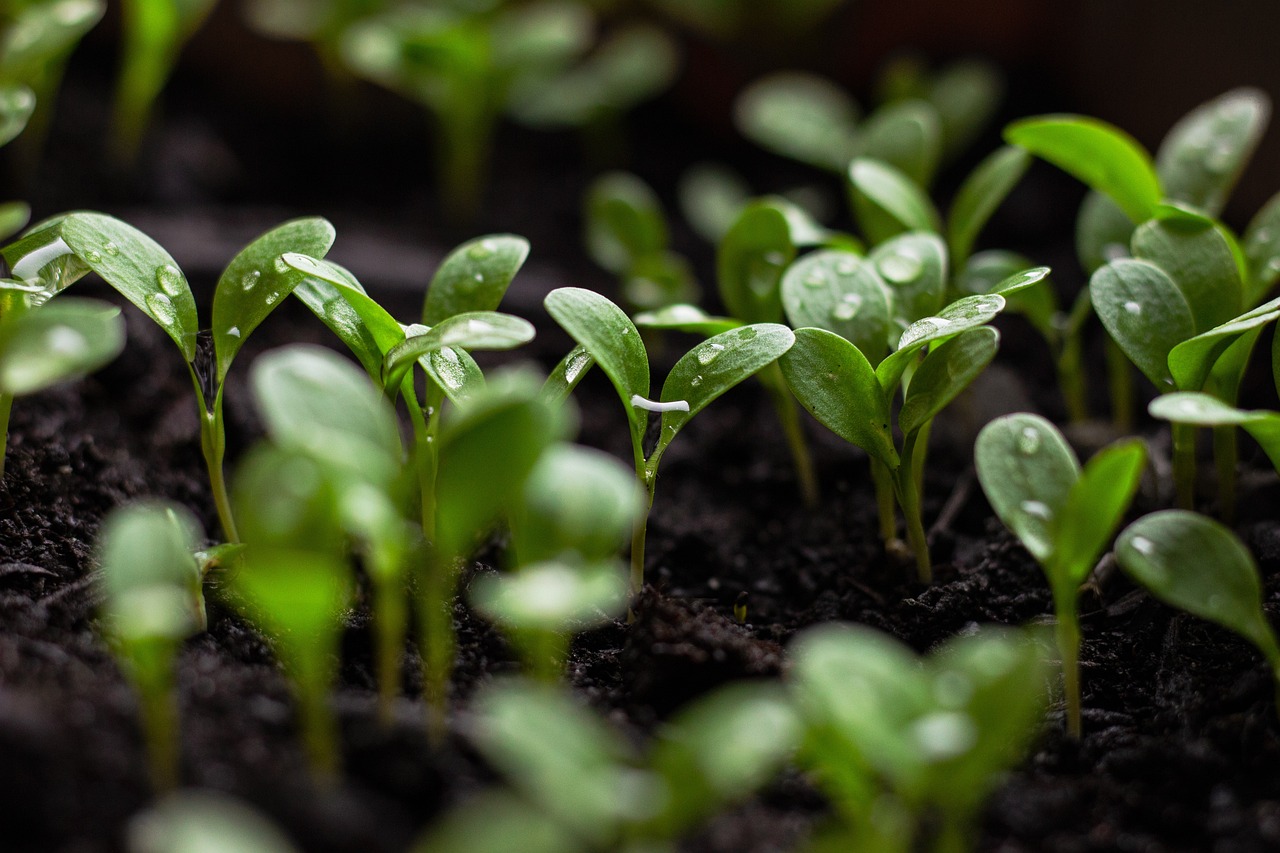
Energy-Efficient Windows
Upgrading to is not just a trend; it's a smart move for any homeowner looking to enhance their living space while being kind to the planet. These windows are designed to minimize heat loss during the winter and reduce heat gain in the summer, which can lead to substantial savings on your heating and cooling bills. Imagine sitting in your cozy living room during a chilly winter evening, feeling the warmth without cranking up the thermostat to ridiculous levels. Sounds ideal, right?
But what makes these windows so special? Well, energy-efficient windows typically feature advanced technologies such as double or triple glazing, low-emissivity (low-E) coatings, and gas fills like argon or krypton between the panes. Each of these elements plays a crucial role in improving the window's insulation properties. To put it simply, they act like a warm blanket for your home, keeping the cold air out and the warm air in.
Here’s a quick breakdown of the benefits you can expect when investing in energy-efficient windows:
- Lower Energy Bills: By reducing the amount of heating and cooling needed, you’ll notice a significant drop in your utility bills.
- Increased Comfort: Say goodbye to drafty spots and hello to a more consistent indoor temperature.
- Noise Reduction: Double or triple glazing can also help reduce outside noise, turning your home into a peaceful retreat.
- Enhanced Property Value: Energy-efficient upgrades can increase your home’s market value, making it a wise investment for the future.
Moreover, these windows can be tailored to fit any style of home, from modern to traditional, ensuring that you don’t have to sacrifice aesthetics for functionality. Many homeowners worry about the upfront costs of replacing their windows, but consider this: investing in energy-efficient windows is akin to planting a money tree in your backyard. While the initial investment may seem steep, the long-term savings and benefits will pay off handsomely.
In addition to the financial advantages, energy-efficient windows also contribute to a healthier environment. By reducing energy consumption, you’re lowering your carbon footprint and helping to combat climate change. It's a win-win situation where you can enjoy your home while being a responsible global citizen.
In conclusion, if you're contemplating home improvements that yield both immediate comfort and long-term savings, look no further than energy-efficient windows. They're not just an upgrade; they're a lifestyle choice that reflects your commitment to sustainability and financial prudence.
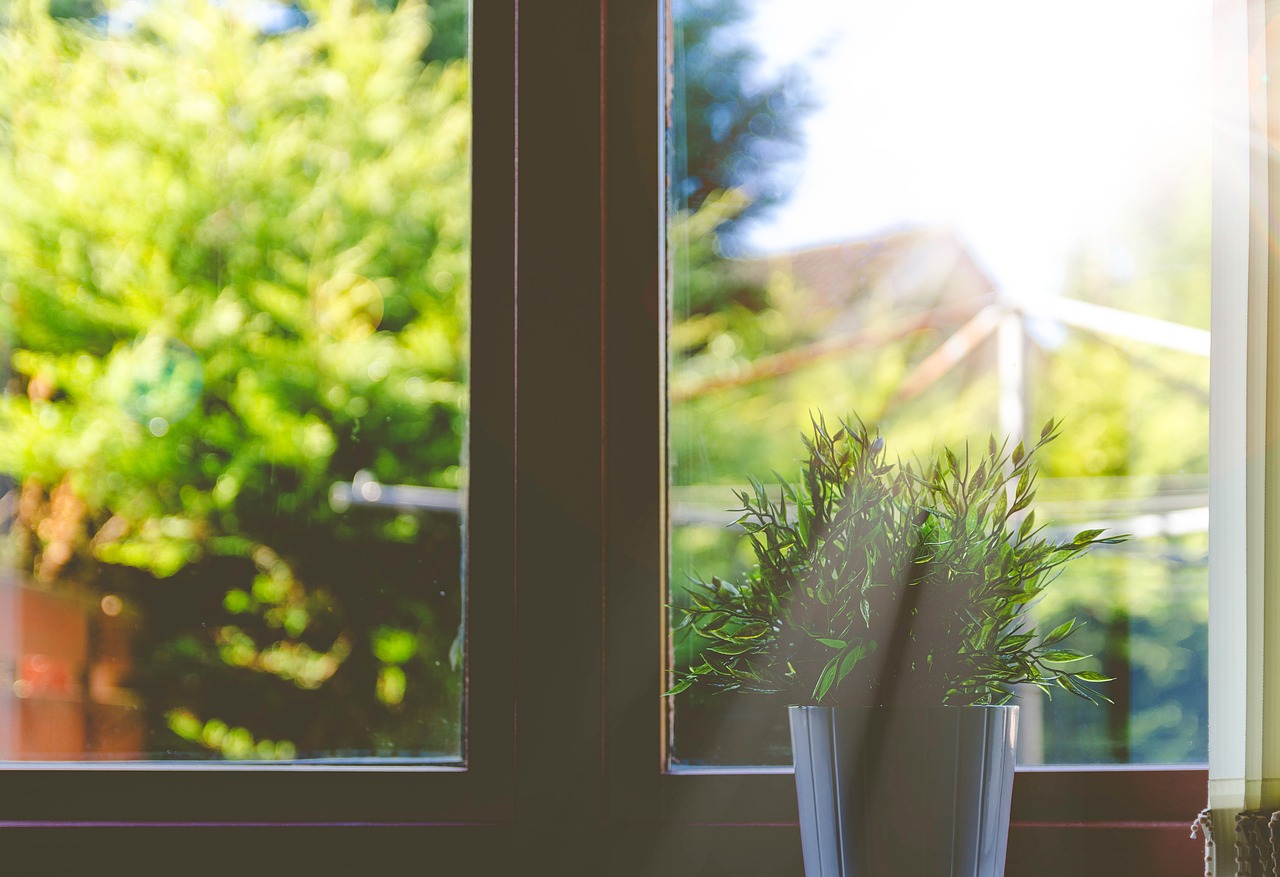
Solar Panels
Installing is more than just a trend; it's a transformative step towards a sustainable future. By harnessing the power of the sun, homeowners can significantly reduce their reliance on fossil fuels, which is not only good for the planet but also great for your wallet. Imagine slashing your electricity bills while increasing the value of your home! Sounds appealing, right?
When you think about it, solar panels are like a personal power plant on your roof. They convert sunlight into electricity, allowing you to use renewable energy for your daily needs. This means that during sunny days, you could be generating your own electricity, which can lead to substantial savings over time. And let’s not forget about the potential tax incentives and rebates available for solar panel installation, which can help offset the initial investment.
But before you dive into the world of solar energy, it's essential to understand the different types of solar panels available. Each type comes with its own set of advantages and disadvantages, making it crucial to choose the right one for your home. Here’s a quick breakdown:
| Type of Solar Panel | Efficiency | Cost | Best For |
|---|---|---|---|
| Monocrystalline | High | Higher | Limited roof space |
| Polycrystalline | Medium | Lower | Larger installations |
As you can see from the table, monocrystalline panels are known for their high efficiency and longevity. They take up less space, which is perfect for homeowners with limited roof area who still want to maximize energy production. On the other hand, polycrystalline panels are a more budget-friendly option, making them ideal for larger installations where space is not a constraint.
Now, let’s talk about the elephant in the room: the upfront cost of installation. While it can be significant, it’s vital to look at the bigger picture. Consider the long-term savings on your electricity bills, the increasing value of your home, and the potential for energy independence. Plus, with the right maintenance, solar panels can last for decades, making them a wise investment.
In summary, investing in solar panels is not just about going green; it's about creating a sustainable lifestyle that pays off in the long run. By choosing the right type of solar panel and understanding the costs involved, you can make an informed decision that benefits both your home and the environment.
- How much do solar panels cost? The cost varies based on the type and size of the system, but many homeowners see a return on investment within 5-7 years.
- Do solar panels work on cloudy days? Yes, solar panels can still generate electricity on cloudy days, although their efficiency may be reduced.
- How long do solar panels last? Most solar panels come with a warranty of 25 years and can last even longer with proper maintenance.

Types of Solar Panels
When considering a solar panel installation, it's crucial to understand the various available. Each type has its own unique features, efficiency levels, and costs, making them suitable for different needs and preferences. The two most common types of solar panels are monocrystalline and polycrystalline panels. Let's dive into these options to help you make an informed decision.
Monocrystalline Panels are often regarded as the premium choice in the solar market. They are made from a single crystal structure, which allows for higher efficiency rates—typically between 15% to 22%. This means they can produce more electricity from the same amount of sunlight compared to other types. If you have limited roof space, monocrystalline panels are ideal because they require less space for installation while maximizing energy output. However, this efficiency comes at a price; they tend to be more expensive than their counterparts.
On the other hand, Polycrystalline Panels are created from multiple crystal structures, which gives them a distinct blue hue. They are generally less efficient than monocrystalline panels, with efficiency rates ranging from 13% to 16%. However, they are also more affordable, making them a popular choice for homeowners on a budget or those with ample roof space. If you're looking to install a larger solar system and want to save money, polycrystalline panels might be the way to go.
To summarize, here’s a quick comparison:
| Type of Panel | Efficiency | Cost | Best For |
|---|---|---|---|
| Monocrystalline | 15% - 22% | Higher | Limited space, maximum efficiency |
| Polycrystalline | 13% - 16% | Lower | Larger installations, budget-conscious homeowners |
Ultimately, the choice between monocrystalline and polycrystalline panels will depend on your specific needs, budget, and available space. It's essential to weigh the pros and cons of each type before making a decision. Additionally, consulting with a solar energy expert can provide valuable insights tailored to your situation, ensuring that you choose the most suitable solar panel type for your home.

Monocrystalline Panels
When it comes to solar energy solutions, stand out as a top choice for many homeowners. These panels are crafted from a single crystal structure, which allows them to achieve higher efficiency rates compared to other types. In fact, they can convert up to 20-25% of sunlight into electricity, making them an excellent option for those looking to maximize their energy production.
One of the primary advantages of monocrystalline panels is their space efficiency. Because they produce more energy per square foot, they are particularly beneficial for homes with limited roof space. This means you can generate more electricity without needing to cover your entire roof with panels. Additionally, their sleek black appearance often blends well with modern architecture, enhancing the aesthetic appeal of your home.
However, like any investment, there are considerations to keep in mind. The upfront cost of monocrystalline panels tends to be higher than that of other types, such as polycrystalline panels. Yet, many homeowners find that the long-term savings on energy bills and the potential increase in property value make this investment worthwhile. Here’s a quick comparison of the benefits:
| Feature | Monocrystalline Panels | Polycrystalline Panels |
|---|---|---|
| Efficiency | 20-25% | 15-20% |
| Space Requirement | Less space needed | More space needed |
| Cost | Higher upfront cost | Lower upfront cost |
| Lifespan | 25+ years | 20-25 years |
Moreover, monocrystalline panels are known for their durability and long lifespan, often exceeding 25 years. This longevity means that once you install them, you can enjoy clean energy for decades with minimal maintenance. It's like planting a tree that bears fruit for years to come; the initial investment pays off in the long run as you reap the benefits of lower energy costs.
In conclusion, if you’re considering solar energy options for your home, monocrystalline panels are a compelling choice. They offer high efficiency, aesthetic appeal, and long-term savings that can make a significant difference in your energy consumption and environmental impact. With the right installation and maintenance, these panels can be a shining star in your sustainable living journey.
- What is the lifespan of monocrystalline solar panels? Typically, they last over 25 years.
- Are monocrystalline panels worth the investment? Yes, their efficiency and longevity often lead to significant savings over time.
- How do monocrystalline panels perform in low-light conditions? They tend to perform better than polycrystalline panels in low-light situations, making them a reliable choice.
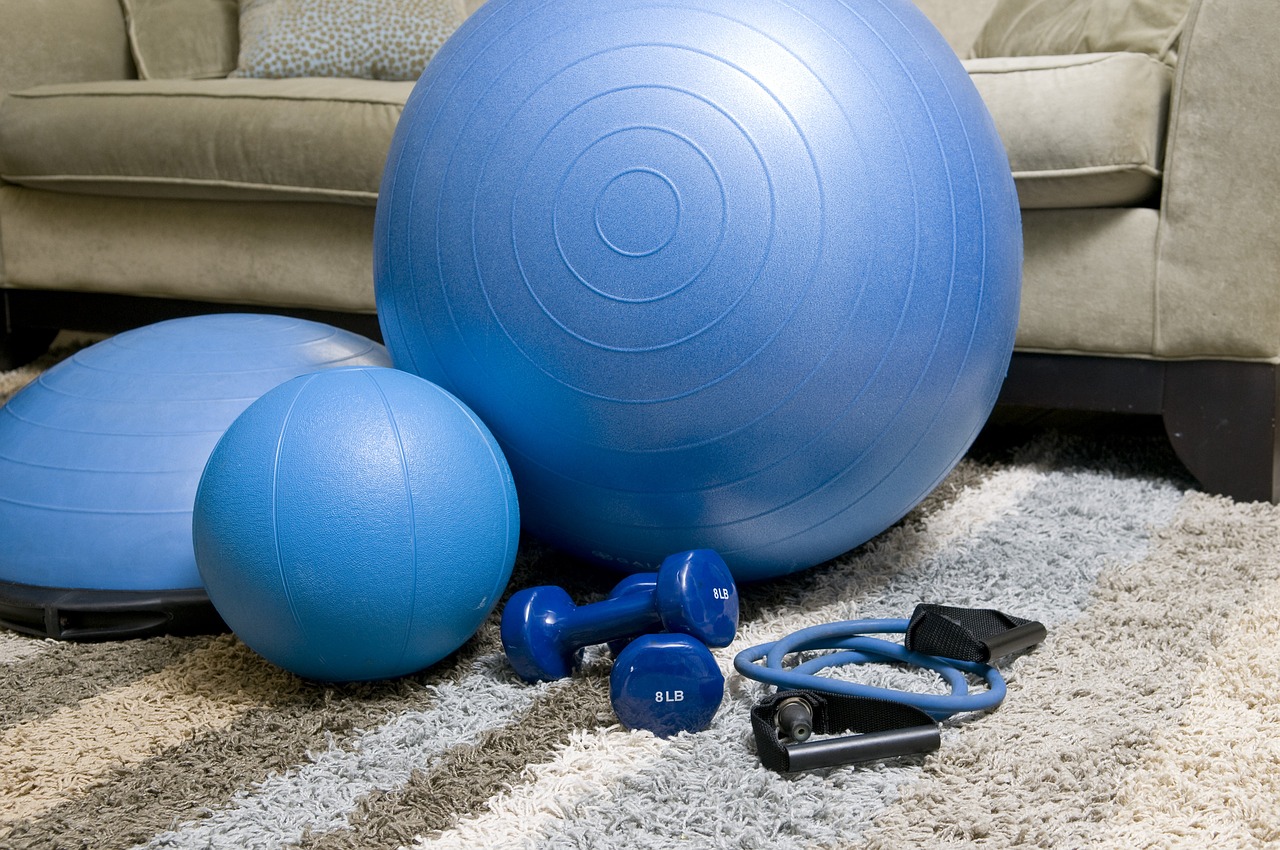
Polycrystalline Panels
Polycrystalline solar panels are a popular choice among homeowners looking to make an eco-friendly investment without breaking the bank. These panels are made from multiple silicon crystals melted together, which gives them a distinctive bluish hue. One of the most appealing aspects of polycrystalline panels is their affordability. Compared to their monocrystalline counterparts, they generally have a lower price point, making them a great option for those who want to dip their toes into solar energy without a hefty upfront cost.
While polycrystalline panels may not be as efficient as monocrystalline panels, they still offer a reliable way to harness solar energy. Their efficiency typically ranges from 13% to 16%, which is sufficient for many households, especially in areas with ample sunlight. This means that even if they take up a bit more space to produce the same amount of energy, they can still effectively reduce your electricity bills and carbon footprint.
Another advantage of polycrystalline panels is their durability. They are designed to withstand harsh weather conditions, including high winds and hail, making them a long-lasting investment. However, it’s essential to consider the installation process and the space available on your roof. Since polycrystalline panels are less efficient, you may need more panels to meet your energy needs, which could be a factor if your roof space is limited.
When choosing polycrystalline panels, it’s crucial to look at the manufacturer's warranty and performance guarantee. Most reputable companies offer warranties between 10 to 25 years, ensuring that your investment is protected over time. Additionally, many manufacturers provide performance guarantees, which ensure that the panels will produce a certain percentage of their rated capacity for a specified period.
In summary, polycrystalline panels are an excellent option for homeowners seeking a balance between cost and efficiency. They provide a sustainable solution for reducing energy bills and contributing to a greener planet. If you're looking for a budget-friendly way to embrace solar energy, polycrystalline panels might just be the answer you’ve been searching for!
- What is the lifespan of polycrystalline solar panels? Polycrystalline panels typically have a lifespan of 25 years or more, depending on the manufacturer and installation quality.
- Are polycrystalline panels more affordable than monocrystalline panels? Yes, polycrystalline panels are generally less expensive than monocrystalline panels, making them a more budget-friendly option.
- How much energy can I expect to save with polycrystalline panels? The amount of energy savings varies based on factors such as your location, energy consumption, and the size of the solar system installed.
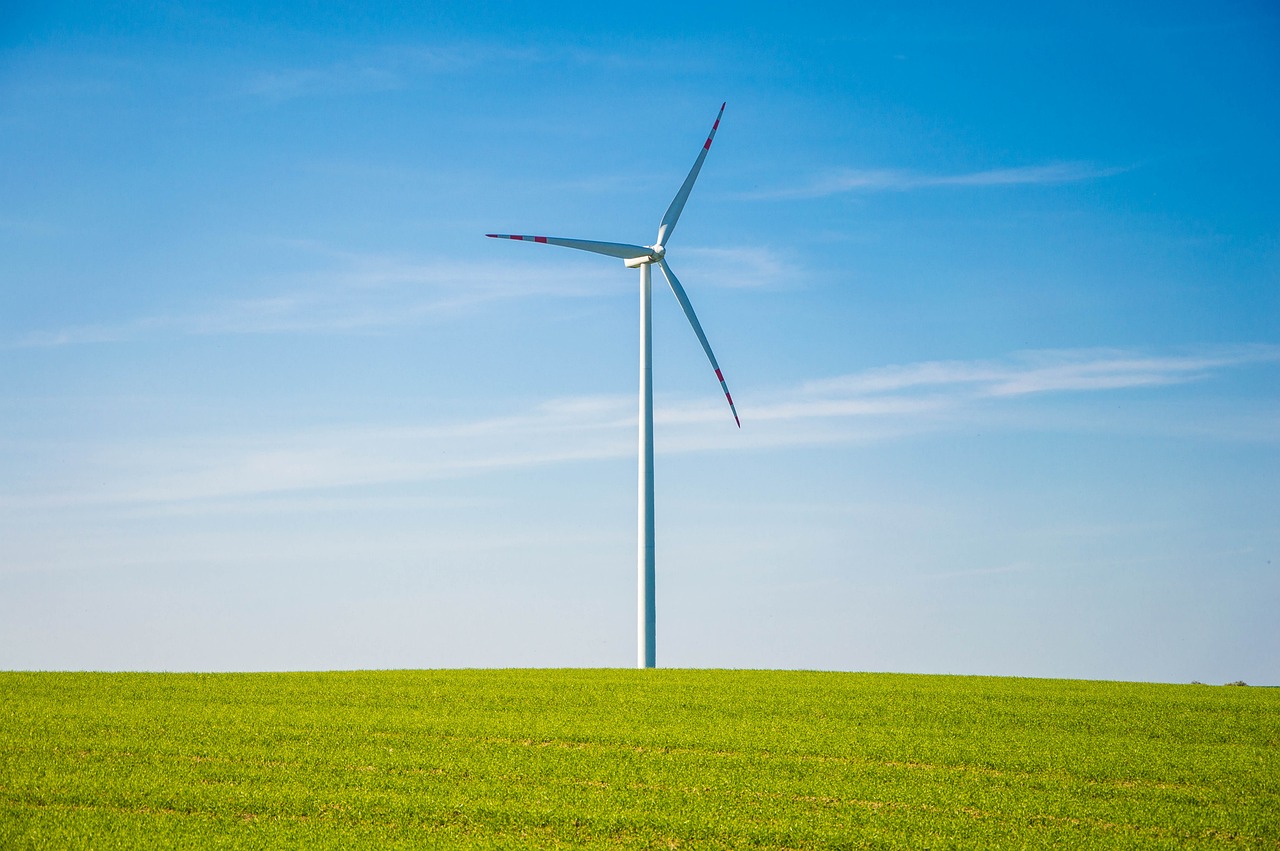
Installation and Maintenance Costs
When considering the installation of solar panels, it's essential to understand the upfront costs and the long-term savings associated with this eco-friendly upgrade. The initial investment can vary significantly based on several factors, including the type of solar panels chosen, the size of the system, and the complexity of the installation. Typically, homeowners can expect to pay anywhere from $15,000 to $30,000 for a complete solar panel system, including installation. However, this cost can be mitigated through various incentives and tax credits available in many regions.
Once installed, solar panels require minimal maintenance, which is one of their most appealing features. Regular cleaning and inspections are essential to ensure optimal performance. Homeowners should plan for occasional cleaning, especially in areas with high dust or pollen levels, which can affect energy efficiency. On average, maintenance costs range from $100 to $300 annually, depending on the system size and local conditions.
To give you a clearer picture, here’s a breakdown of typical costs associated with solar panel installation and maintenance:
| Cost Type | Estimated Cost |
|---|---|
| Initial Installation | $15,000 - $30,000 |
| Annual Maintenance | $100 - $300 |
| Potential Tax Credits | Up to 26% of installation cost (varies by location) |
It's important to note that while the initial costs may seem daunting, the long-term savings on electricity bills can be substantial. Many homeowners report savings of 30% to 50% on their energy bills after installing solar panels. Additionally, the value added to your home can be significant; homes with solar energy systems often sell for more than those without. So, when weighing the costs, consider not just the immediate financial outlay but the potential for long-term savings and increased property value.
In conclusion, understanding the installation and maintenance costs of solar panels is crucial for making an informed decision. By evaluating these costs against the potential savings and benefits, homeowners can determine if this sustainable upgrade is the right choice for their lifestyle and financial situation.
- What are the financial incentives for installing solar panels? Many regions offer tax credits, rebates, and other incentives that can significantly reduce the upfront cost of solar panel installation.
- How long do solar panels last? Most solar panels come with a warranty of 25 years, but many can last even longer with proper maintenance.
- Can I install solar panels myself? While some homeowners choose to install solar panels themselves, it's usually recommended to hire a professional to ensure safety and efficiency.
- What happens if my solar panels produce more energy than I use? Excess energy can often be sent back to the grid, allowing homeowners to receive credits or payments from their utility company.

Smart Home Technology
Integrating into your living space isn't just a trend—it's a lifestyle change that can elevate your home's energy efficiency and convenience to new heights. Imagine walking into a room where the lights adjust automatically to your preferred brightness, or your thermostat knows just how to keep you cozy without wasting energy. Sounds futuristic, right? But with smart technology, it’s a reality that many homeowners are embracing.
One of the standout features of smart home technology is its ability to automate systems such as heating, cooling, and lighting. This means you can program your home to respond to your habits. For instance, when you leave for work, your smart thermostat can lower the temperature, and the lights can turn off automatically, ensuring that you’re not wasting energy while you’re away. This not only contributes to a sustainable living environment but also translates to significant savings on your utility bills over time.
Let’s delve deeper into some of the key components of smart home technology:
- Smart Thermostats: These devices learn your schedule and adjust heating or cooling accordingly. By optimizing your home's climate control, they can lead to substantial savings on utility bills while maintaining comfort.
- Energy Monitoring Systems: With real-time data on energy consumption, these systems allow homeowners to pinpoint where they can cut back. It’s like having a personal energy coach guiding you to reduce waste and improve efficiency.
But the benefits don’t stop there. Smart home technology can also enhance your home’s security. Imagine being able to monitor your home remotely, receiving alerts when someone enters your property, or even controlling your locks from your smartphone. This peace of mind is invaluable, especially for busy families or those who travel frequently.
Moreover, the integration of smart appliances, such as refrigerators that can track expiration dates or ovens that you can preheat from your phone, adds another layer of convenience. With these innovations, you can spend less time managing your home and more time enjoying it.
So, why should you consider investing in smart home technology? Here are a few compelling reasons:
- Energy Savings: Reduced energy consumption directly translates to lower bills.
- Convenience: Automating daily tasks frees up your time.
- Increased Home Value: Smart features can make your home more attractive to potential buyers.
In conclusion, smart home technology is not just a passing fad. It’s a forward-thinking investment that enhances your home’s functionality while promoting sustainability. As we move towards a more eco-conscious world, adopting these technologies can lead to a healthier planet and a more comfortable living space.
Q: What is smart home technology?
A: Smart home technology refers to devices and systems that can be controlled remotely through a smartphone or other networked devices, allowing for automation and enhanced energy efficiency.
Q: How can smart home technology save me money?
A: By automating systems like heating and cooling, smart home technology can reduce energy consumption, which leads to lower utility bills over time.
Q: Is it difficult to install smart home technology?
A: Many smart devices are designed for easy installation and can often be set up without professional help. However, for more complex systems, consulting with a professional may be beneficial.
Q: Can I control my smart home devices when I’m not at home?
A: Yes! Most smart home devices can be controlled remotely through mobile apps, allowing you to manage your home from anywhere.

Smart Thermostats
Smart thermostats are revolutionizing the way we manage our home environments. Imagine being able to control your home's temperature from your smartphone, no matter where you are! These devices not only offer convenience but also play a significant role in enhancing energy efficiency. By learning your habits and preferences, smart thermostats can automatically adjust the heating and cooling schedules, ensuring that energy is not wasted when you are away or sleeping.
One of the standout features of smart thermostats is their ability to optimize energy use. For instance, if you typically leave for work at 8 AM, your thermostat can learn this pattern and adjust the temperature accordingly. This means your home won't be heated or cooled unnecessarily during the day, leading to substantial savings on your utility bills. In fact, studies have shown that households using smart thermostats can save between 10% to 15% on their annual heating and cooling costs!
Moreover, many smart thermostats come equipped with energy monitoring capabilities. This feature allows you to track your energy consumption in real-time, giving you insights into your usage patterns. With this information at your fingertips, you can make informed decisions that promote more sustainable habits. For example, you might discover that your air conditioning unit is working harder than it should be, prompting you to adjust settings or even consider maintenance.
When selecting a smart thermostat, there are a few key features to consider:
- Remote Access: Ensure that the thermostat can be controlled via a mobile app.
- Learning Capability: Look for models that can learn your schedule and preferences.
- Integration: Check if it can be integrated with other smart home devices for seamless automation.
In conclusion, investing in a smart thermostat is not just about convenience; it's about making a long-term commitment to energy efficiency and sustainability. With the right model, you can enjoy a comfortable home while also reducing your carbon footprint. So, are you ready to take control of your energy consumption and make a positive impact on the environment?
1. How much can I save by using a smart thermostat?
Smart thermostats can save homeowners between 10% to 15% on heating and cooling costs annually, depending on usage patterns and settings.
2. Can I control my smart thermostat when I'm away from home?
Yes! Most smart thermostats come with mobile apps that allow you to adjust your home's temperature from anywhere.
3. Do smart thermostats work with all heating and cooling systems?
Most smart thermostats are compatible with a wide range of systems, but it's essential to check the specifications to ensure compatibility with your setup.
4. Are smart thermostats easy to install?
Many smart thermostats are designed for easy installation, and some even provide step-by-step instructions. However, if you're unsure, it's always a good idea to consult a professional.

Energy Monitoring Systems
Energy monitoring systems are becoming essential tools for homeowners who want to take control of their energy consumption. These systems provide real-time data on energy usage, allowing you to see exactly where your energy is going. Imagine being able to track your electricity consumption in the same way you check your bank account balance—it's empowering! With the right information at your fingertips, you can identify areas where you might be wasting energy and make adjustments accordingly.
For instance, did you know that heating and cooling often account for nearly half of a home's energy use? By using an energy monitoring system, you can pinpoint how much energy your HVAC system is consuming and whether it’s operating efficiently. This insight can lead to informed decisions, such as scheduling maintenance or upgrading to more energy-efficient appliances. The beauty of these systems lies in their ability to promote sustainable habits and ultimately reduce your carbon footprint.
Most energy monitoring systems come with user-friendly interfaces and mobile applications, allowing you to monitor your energy consumption from anywhere. You can set alerts for excessive usage, track trends over time, and even receive personalized tips for reducing your energy bills. This level of engagement not only enhances your awareness but also encourages you to adopt more energy-efficient practices.
To illustrate the potential savings, consider the following table that outlines average energy costs and potential savings with an energy monitoring system:
| Energy Use Category | Average Monthly Cost | Potential Savings with Monitoring |
|---|---|---|
| Heating | $150 | $30 |
| Cooling | $120 | $25 |
| Appliances | $80 | $15 |
| Lighting | $50 | $10 |
As you can see, the potential for savings can add up quickly! By investing in an energy monitoring system, you not only save money but also contribute to a more sustainable future. So, why not take the plunge? Equip your home with this technology and watch as your energy consumption becomes more manageable and efficient.
- What is an energy monitoring system?
An energy monitoring system tracks and analyzes your home’s energy consumption in real-time, helping you identify areas for improvement. - How can I install an energy monitoring system?
Most systems are easy to install and come with detailed instructions. Some may require professional installation, especially if they connect to your electrical panel. - What are the benefits of using an energy monitoring system?
Benefits include reduced energy bills, improved energy efficiency, and increased awareness of your energy consumption habits. - Can I use an energy monitoring system with smart home technology?
Absolutely! Many energy monitoring systems integrate seamlessly with existing smart home devices for enhanced functionality.

Rainwater Harvesting Systems
Implementing a rainwater harvesting system is an innovative way to conserve water and reduce your utility costs. This eco-friendly practice involves collecting rainwater from your roof and directing it to a storage tank for later use. Not only does this method help in managing stormwater runoff, but it also provides a sustainable source of water for irrigation, flushing toilets, and other non-potable uses. Imagine having your own reservoir of fresh rainwater, ready to nourish your garden or wash your car, all while contributing to a healthier environment!
When considering a rainwater harvesting system, it's essential to understand its components. A typical system includes:
- Collection Surface: Usually the roof, where rainwater is collected.
- Gutters and Downspouts: Direct the rainwater from the roof to the storage tank.
- Storage Tank: This is where the collected rainwater is stored. Tanks can be above ground or underground, depending on space and aesthetic preferences.
- Filtration System: Ensures that the water is clean and safe for use by filtering out debris and contaminants.
- Distribution System: A network of pipes that delivers the stored water to where it is needed, such as your garden or toilet.
Proper installation is crucial for maximizing the benefits of a rainwater harvesting system. Homeowners should consider local regulations, as some areas have specific guidelines regarding the collection and use of rainwater. Additionally, the size of the system should be tailored to the household's needs, taking into account factors like average rainfall in your area and the intended use of the harvested water.
Maintenance is another key aspect to ensure the system operates efficiently. Regular checks on the filtration system and storage tank will help prevent contamination and ensure that the water remains usable. With a little effort, homeowners can enjoy the benefits of rainwater harvesting, which not only saves money but also promotes sustainable living practices.
Here are some common questions regarding rainwater harvesting systems:
- Is rainwater safe to drink? While rainwater can be collected for drinking, it must be properly filtered and treated to ensure safety. It's best used for non-potable applications unless professionally treated.
- How much water can I collect? The amount of water you can collect depends on your roof size and the average rainfall in your area. A simple calculation can help estimate potential water savings.
- Do I need a permit for installation? This varies by location. It's advisable to check with local authorities regarding any permits or regulations required for installing a rainwater harvesting system.

System Components
When considering a rainwater harvesting system, understanding the essential components is crucial for effective implementation. A typical system consists of several key elements that work together to ensure the collection, storage, and use of rainwater. Each component plays a vital role in maximizing the efficiency and usability of the system.
At the heart of the system is the collection surface, usually the roof of your home, where rainwater is first gathered. The water then travels through gutters and downspouts into a storage tank. These tanks come in various sizes and materials, including plastic, concrete, and metal, allowing homeowners to choose one that best fits their needs and available space.
Once the rainwater reaches the storage tank, it often requires some form of filtration to remove debris and contaminants. This is where first-flush diverters come into play, ensuring that the initial runoff, which may contain roof debris, does not enter the storage tank. A good filtration system is essential for maintaining water quality.
Additionally, pumps are typically needed to distribute the harvested rainwater for various uses, such as irrigation or flushing toilets. These pumps can be powered by electricity or solar energy, adding another layer of sustainability to your system. Finally, homeowners may also want to consider overflow systems to manage excess rainwater during heavy storms, preventing potential damage to the tank or surrounding areas.
To summarize, the primary components of a rainwater harvesting system include:
- Collection Surface: Roof or other surfaces where rainwater is collected.
- Gutters and Downspouts: Channels that direct water into the storage tank.
- Storage Tank: Container for storing collected rainwater.
- Filtration System: Ensures clean water by removing debris.
- Pumps: Distribute harvested water for various uses.
- Overflow Systems: Manage excess water during heavy rain.
Understanding these components will help you make informed decisions about your rainwater harvesting system, ensuring that you can effectively utilize this eco-friendly resource while contributing to a more sustainable home.
Q1: How much rainwater can I collect?
A: The amount of rainwater you can collect depends on the size of your roof and the average rainfall in your area. Generally, larger roofs can collect more water, especially during heavy rain events.
Q2: Is rainwater safe to drink?
A: Rainwater can be safe to drink if properly filtered and treated. However, for non-potable uses like irrigation or toilet flushing, it is usually sufficient without extensive treatment.
Q3: What maintenance is required for a rainwater harvesting system?
A: Regular maintenance includes cleaning gutters, checking filters, and inspecting the storage tank for any signs of algae or contamination. It's essential to ensure the system operates efficiently.
Q4: Are there any regulations regarding rainwater harvesting?
A: Regulations vary by location, so it's important to check local laws and guidelines regarding rainwater harvesting systems to ensure compliance.
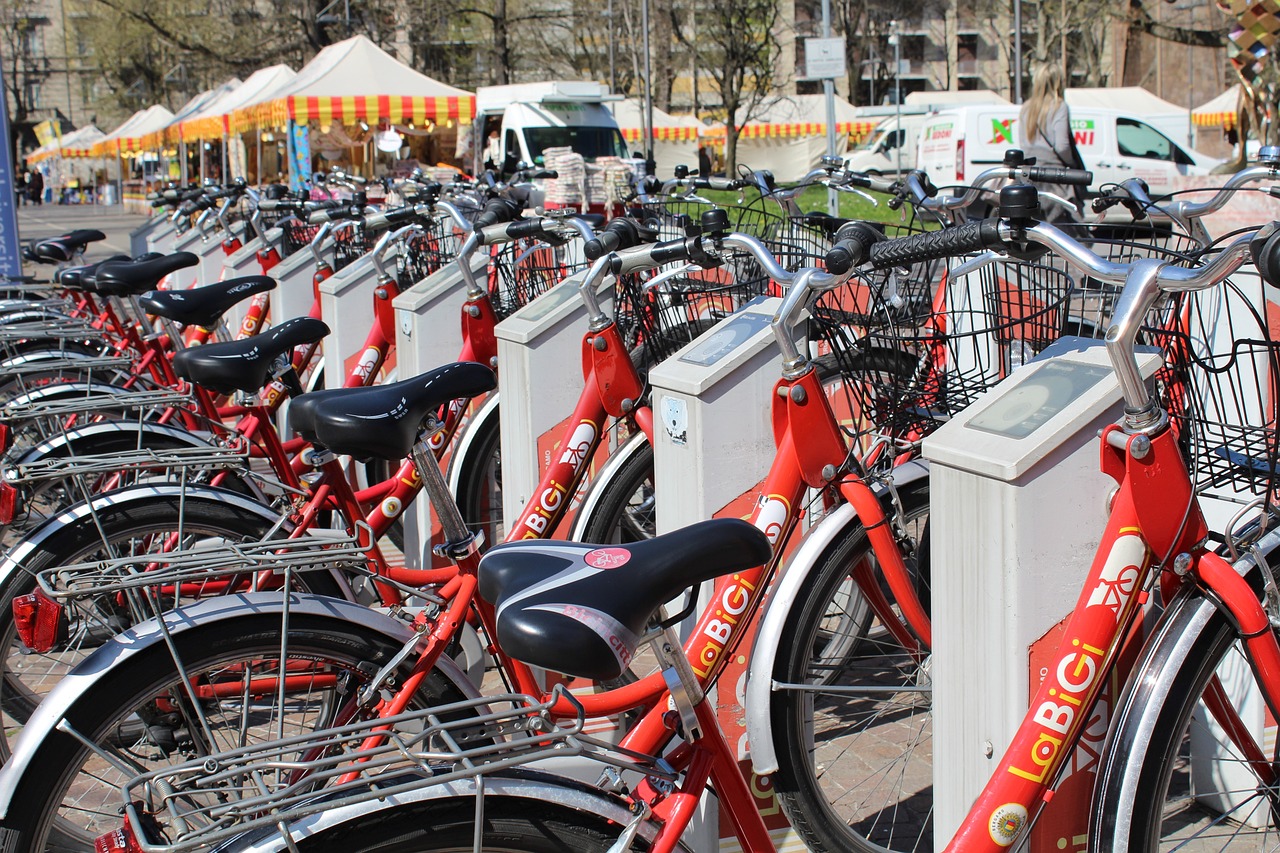
Installation Considerations
When it comes to installing a rainwater harvesting system, there are several key factors that homeowners need to consider to ensure they maximize the benefits of their investment. First and foremost, it's essential to check local regulations. Many areas have specific guidelines regarding the collection and use of rainwater, which can include permits and restrictions. Understanding these regulations will help you avoid any potential legal issues down the line.
Next, think about the size of your system. The capacity of your rainwater storage tanks should be determined by your household's water needs and the average rainfall in your area. A larger system may be beneficial in regions with high rainfall, while smaller systems can suffice in drier climates. To give you an idea of how to size your system, consider the following:
| Rainfall (inches) | Roof Area (sq ft) | Potential Harvest (gallons) |
|---|---|---|
| 30 | 1,000 | 18,000 |
| 40 | 1,000 | 24,000 |
| 50 | 1,000 | 30,000 |
Additionally, the maintenance requirements of your system should not be overlooked. Regular maintenance is crucial for ensuring that your rainwater harvesting system operates efficiently. This includes cleaning gutters, checking filters, and inspecting tanks for any signs of wear or contamination. A well-maintained system can last for many years, providing you with free water for irrigation and other non-potable uses.
Finally, consider the location of your system. The placement of your tanks and collection surfaces will affect the efficiency of your rainwater harvesting. Ideally, your tanks should be situated close to your downspouts to minimize the distance water has to travel. Additionally, ensure that your collection surfaces, such as roofs, are made from non-toxic materials that won't contaminate your water supply.
By taking these installation considerations into account, you can create a rainwater harvesting system that is not only effective but also compliant with local laws and tailored to your specific needs. This investment in sustainability will not only help the environment but also reduce your utility costs in the long run.
- What is rainwater harvesting? Rainwater harvesting is the process of collecting and storing rainwater for later use, typically for irrigation or other non-potable applications.
- Is it legal to collect rainwater? Laws vary by region, so it's important to check local regulations regarding rainwater harvesting.
- How much water can I collect? The amount of water you can collect depends on your roof size and the average rainfall in your area.
- What maintenance is required for a rainwater harvesting system? Regular maintenance includes cleaning gutters, checking filters, and inspecting storage tanks.

Insulation Upgrades
Upgrading your home's insulation is akin to wrapping your house in a cozy blanket. It’s one of the most effective ways to enhance energy efficiency, keeping your home warm in the winter and cool in the summer. Imagine slashing your energy bills while simultaneously creating a more comfortable living space. Quality insulation acts as a barrier against heat loss and gain, making it a smart investment for any homeowner looking to improve their property’s sustainability.
There are various types of insulation materials available, each with unique properties that cater to different needs. For instance, fiberglass insulation is popular for its affordability and effectiveness, while spray foam offers superior air sealing capabilities. Understanding the differences helps homeowners choose the best option for their specific needs and climate. Here’s a quick comparison of some common insulation types:
| Type of Insulation | R-Value (per inch) | Cost (per square foot) | Best For |
|---|---|---|---|
| Fiberglass | 2.9 - 4.3 | $0.50 - $1.00 | Attics, walls |
| Spray Foam | 6.0 - 7.0 | $1.00 - $3.00 | Sealing gaps, attics |
| Cellulose | 3.1 - 3.8 | $0.60 - $2.00 | Walls, attics |
| Mineral Wool | 3.1 - 4.0 | $0.90 - $1.50 | Soundproofing, fire resistance |
Investing in insulation not only lowers energy bills but also improves indoor air quality and overall comfort. Enhanced insulation contributes to a sustainable home by reducing energy consumption, which in turn decreases your carbon footprint. By minimizing the need for heating and cooling, you’re not just saving money; you’re also doing your part for the environment.
Moreover, quality insulation can increase your home's resale value. Prospective buyers are often attracted to homes that promise lower utility costs and enhanced comfort. So, when you think about insulation upgrades, consider it an investment—not just in your current living situation but also in your future.
In conclusion, upgrading your insulation is a powerful step towards creating a more energy-efficient and eco-friendly home. Whether you choose fiberglass, spray foam, or cellulose, each option brings its own set of benefits. So, why wait? Start planning your insulation upgrade today and enjoy the warmth and savings that come with it!
- What is the best type of insulation for my home? The best type of insulation depends on your location, budget, and specific needs. Fiberglass is a common choice, while spray foam offers superior sealing.
- How much can I save on energy bills with insulation upgrades? Homeowners can save up to 20% on heating and cooling costs with proper insulation, depending on the existing insulation quality.
- Is professional installation necessary for insulation? While some insulation types can be installed as a DIY project, professional installation is recommended for spray foam and complex applications to ensure effectiveness.

Types of Insulation
When it comes to making your home more energy-efficient, understanding the various available is crucial. Each type has its unique properties, advantages, and applications, which can significantly affect your home's energy consumption and comfort levels. Let's dive into some of the most common types of insulation that homeowners can consider:
Fiberglass Insulation is perhaps the most widely used insulation material. It's made from tiny glass fibers and is available in batts, rolls, or loose-fill. Fiberglass insulation is non-combustible, resistant to moisture, and has a high R-value, which measures its thermal resistance. This makes it an excellent choice for attics, walls, and floors. However, it's essential to handle it with care, as the fibers can irritate the skin and lungs.
Foam Board Insulation consists of rigid panels made from polystyrene or polyurethane. It provides a high insulating value for relatively little thickness and is ideal for basement walls, exterior walls, and even roofs. One of the standout features of foam board insulation is its moisture resistance, making it perfect for areas prone to dampness. However, it can be more expensive than other options.
Spray Foam Insulation is a more modern solution that expands upon application, filling gaps and cracks effectively. It provides an excellent air barrier and has a high R-value, making it highly efficient. There are two types of spray foam: open-cell and closed-cell. Open-cell foam is softer and less dense, while closed-cell foam is denser and provides better moisture resistance. This type of insulation is great for hard-to-reach areas but requires professional installation due to its complexity.
Cellulose Insulation is an eco-friendly option made from recycled paper products. It's treated with fire retardants and is often blown into walls and attics. Cellulose insulation has a good R-value and is effective at reducing air leaks, making it a sustainable choice for environmentally-conscious homeowners. However, it can settle over time, potentially reducing its effectiveness, so proper installation is critical.
Lastly, we have Mineral Wool (Rock Wool) Insulation, which is made from natural or recycled materials. It offers excellent fire resistance and soundproofing qualities. Mineral wool is also water-resistant and does not promote mold growth, making it a safe choice for various applications. However, it can be more expensive than fiberglass insulation.
In summary, the choice of insulation depends on various factors such as budget, climate, and specific areas of the home that require insulation. Each type has its unique benefits and potential drawbacks, so it's essential to consider your home's needs carefully. By selecting the right insulation, you can significantly enhance your home's energy efficiency, comfort, and sustainability.
- What is the best type of insulation for my home? The best type of insulation depends on your specific needs, budget, and the areas of your home that require insulation. Fiberglass and spray foam are popular choices for their efficiency and versatility.
- How much can I save on energy bills with proper insulation? Proper insulation can lead to significant savings on energy bills, often ranging from 10% to 50%, depending on your current insulation levels and energy usage.
- Can I install insulation myself? While some types of insulation, like fiberglass batts, can be installed by homeowners, others, such as spray foam, are best left to professionals due to the complexity involved.
- How often should I replace my insulation? Insulation can last for many years, but it's a good idea to evaluate its condition during home renovations or if you notice drafts or temperature fluctuations.
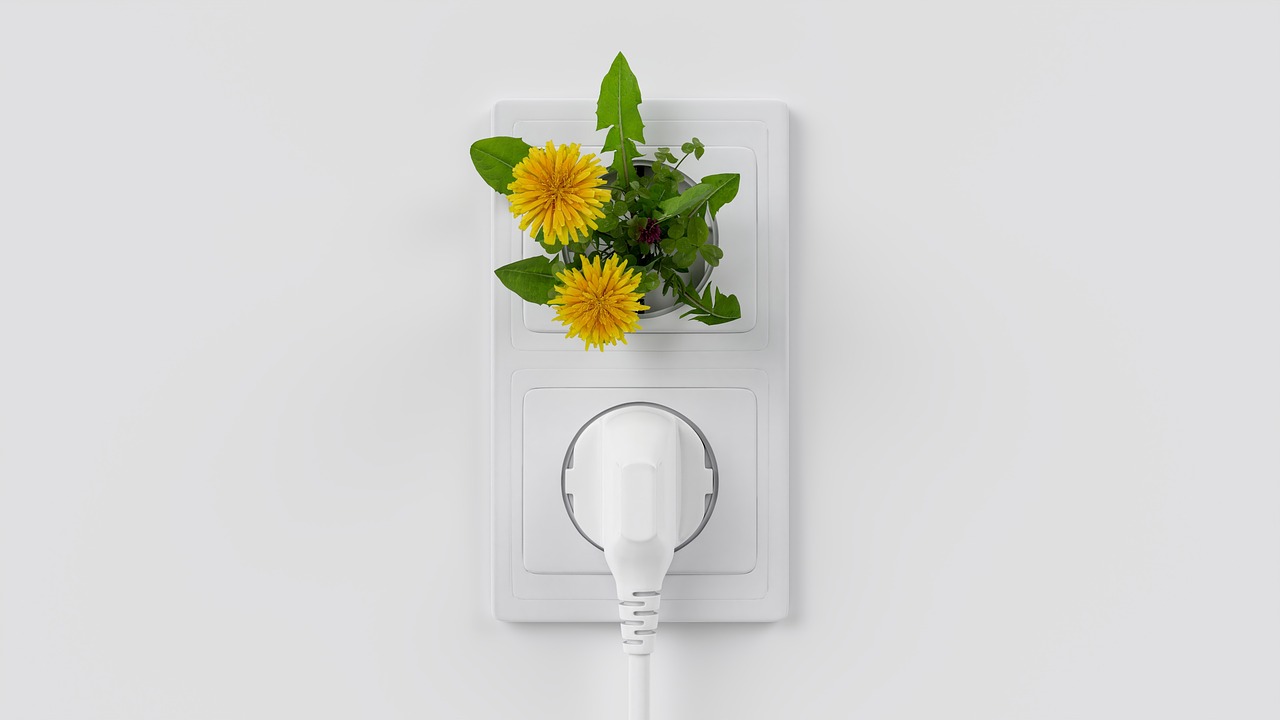
Benefits of Insulation
Investing in quality insulation is like wrapping your home in a cozy blanket—it keeps the warmth in during winter and the coolness in during summer. This not only enhances comfort but also plays a crucial role in reducing energy consumption, which can translate to significant savings on your utility bills. Imagine slashing your heating and cooling costs by up to 30%! That’s the power of effective insulation.
Furthermore, improved insulation contributes to a healthier indoor environment. By minimizing drafts and preventing moisture buildup, insulation helps maintain consistent indoor temperatures and reduces the likelihood of mold growth. This is particularly important for families with allergies or respiratory issues, as better air quality can lead to fewer health problems.
Another compelling reason to consider insulation is its impact on property value. Homes with superior insulation are often more attractive to potential buyers, as they signify lower energy costs and a more comfortable living space. In fact, a well-insulated home can be a strong selling point in real estate markets, making it a wise investment for the future.
To illustrate the benefits, let’s take a look at some key advantages of insulation:
- Energy Efficiency: Reduces the need for heating and cooling, leading to lower energy bills.
- Comfort: Maintains a stable indoor temperature throughout the year.
- Health Benefits: Improves indoor air quality and reduces moisture-related issues.
- Increased Home Value: Enhances marketability and resale value of the property.
In summary, insulation is an essential component of a sustainable home. Not only does it provide immediate financial benefits, but it also contributes to long-term comfort and health, making it a worthwhile investment for any homeowner.
1. How much can I save on my energy bills by upgrading my insulation?
While savings vary based on factors like your home’s size and climate, many homeowners report a reduction of 20-30% in their heating and cooling costs after upgrading their insulation.
2. What type of insulation is best for my home?
The best type of insulation depends on your specific needs and local climate. Common types include fiberglass, foam board, and spray foam. Consulting with a professional can help you determine the most effective option.
3. Is it worth the investment to insulate my home?
Absolutely! Insulation not only pays for itself over time through energy savings but also enhances your home’s comfort and value, making it a smart investment.
4. Can I install insulation myself?
While some types of insulation can be DIY projects, others, like spray foam, require professional installation to ensure effectiveness and safety. Always assess your skills and the complexity of the installation before proceeding.

Eco-Friendly Landscaping
When it comes to enhancing the beauty and sustainability of your property, is a game changer. Imagine stepping into your yard and being greeted by vibrant colors, fragrant flowers, and lush greenery, all while knowing that your choices are positively impacting the environment. By opting for sustainable landscaping practices, you not only elevate your home’s aesthetic appeal but also contribute to a healthier ecosystem.
One of the foundational elements of eco-friendly landscaping is the selection of native plants. These are species that naturally occur in your region and are well-adapted to the local climate, soil conditions, and wildlife. By choosing native plants, you create a habitat that supports local fauna, including birds, butterflies, and beneficial insects. Additionally, native plants typically require less water and maintenance than non-native species, making them a practical choice for homeowners looking to conserve resources.
Another crucial aspect of sustainable landscaping is the implementation of water-efficient irrigation systems. Traditional irrigation methods often lead to overwatering, which can waste precious water and promote unhealthy plant growth. Consider installing a drip irrigation system, which delivers water directly to the roots of plants. This method minimizes evaporation and runoff, ensuring that your plants receive the moisture they need without unnecessary waste. Not only does this conserve water, but it also promotes healthier, more resilient plants.
To further enhance the sustainability of your landscape, think about incorporating features like rain gardens and permeable paving. Rain gardens are designed to capture and absorb rainwater runoff from impervious surfaces, allowing it to filter naturally back into the ground. This practice not only helps manage stormwater but also reduces the risk of flooding and erosion. Permeable paving, on the other hand, allows water to infiltrate through surfaces like driveways and walkways, reducing runoff and replenishing groundwater supplies.
Moreover, consider the benefits of composting and using organic fertilizers. By enriching your soil with compost, you improve its structure and nutrient content, thereby reducing the need for chemical fertilizers that can harm the environment. This natural approach fosters a thriving ecosystem in your garden, promoting biodiversity and healthier plant growth.
In summary, eco-friendly landscaping is not just a trend; it’s a way to create a beautiful, sustainable environment that benefits both you and the planet. By choosing native plants, implementing efficient irrigation systems, and embracing organic practices, you can transform your outdoor space into a thriving oasis that reflects your commitment to sustainability.
- What are the benefits of using native plants in landscaping? Native plants require less water, are more resistant to pests, and support local wildlife, making them an excellent choice for sustainable landscaping.
- How can I make my irrigation system more efficient? Consider installing a drip irrigation system that delivers water directly to the roots of your plants, minimizing waste and ensuring healthy growth.
- What is a rain garden, and how does it work? A rain garden is a planted depression that captures and absorbs rainwater runoff, helping to filter it back into the ground and reduce flooding.
- Can I use compost in my garden? Absolutely! Compost enriches the soil with nutrients, improves its structure, and reduces the need for chemical fertilizers.
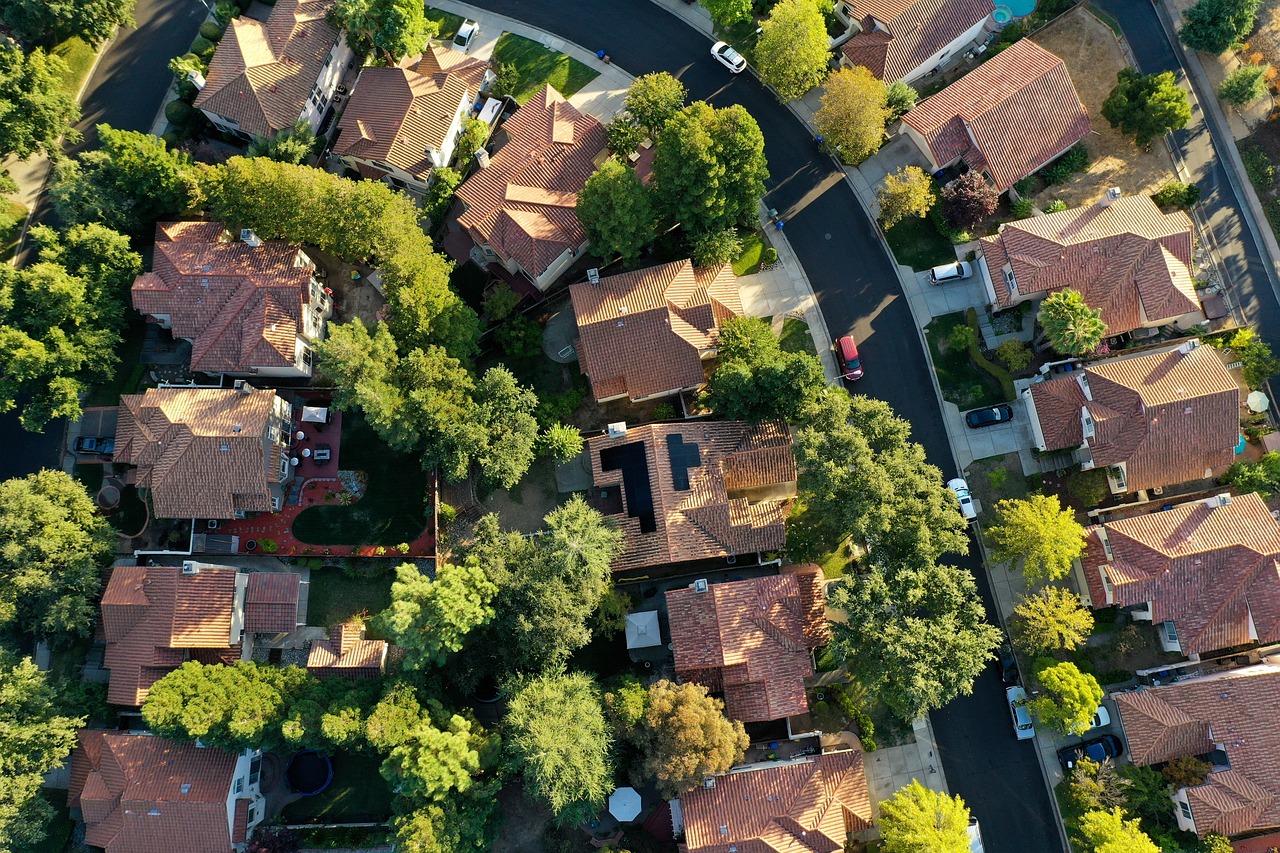
Native Plant Selection
When it comes to creating a sustainable garden, is a game changer. Native plants are those that naturally occur in your region, having adapted to the local climate and soil conditions over time. By choosing these plants, you not only support local wildlife, but you also reduce the need for excessive watering, fertilizers, and pesticides. Imagine transforming your garden into a thriving ecosystem that attracts butterflies, bees, and birds while requiring minimal maintenance!
One of the most significant benefits of native plants is their resilience. These plants are accustomed to the seasonal changes of their environment, making them more likely to thrive without the extra care that non-native species often require. For instance, a native wildflower garden can flourish with just natural rainfall, while non-native plants may need regular watering and chemical treatments to survive.
Moreover, native plants play a crucial role in maintaining biodiversity. By planting species that are indigenous to your area, you help create habitats that support local fauna. For example, certain native grasses provide essential nesting materials for birds, while specific flowering plants offer nectar for pollinators. This interconnectedness is vital for a healthy ecosystem.
To get started with native plant selection, consider the following tips:
- Research Local Species: Investigate which plants are native to your region. Local gardening centers or online resources can provide valuable information.
- Consider Your Space: Assess the sunlight, soil type, and moisture levels in your garden. Different native plants thrive in various conditions.
- Mix and Match: Incorporate a variety of native plants to create a diverse landscape. This not only enhances visual appeal but also supports a wider range of wildlife.
For those who may feel overwhelmed by the selection process, here’s a simple table to help you identify some popular native plants based on different regions:
| Region | Native Plant Examples |
|---|---|
| Eastern U.S. | Black-eyed Susan, Butterfly Weed, Eastern Redbud |
| Western U.S. | California Poppy, Bluebell, Western Yarrow |
| Midwest | Prairie Dropseed, Coneflower, Purple Prairie Clover |
| Southern U.S. | Azaleas, Southern Magnolia, Coral Honeysuckle |
By thoughtfully selecting native plants for your landscape, you contribute to a healthier environment while enjoying a beautiful garden that reflects the natural beauty of your area. So, why not take the plunge? Your garden—and the planet—will thank you!
Q: What are the benefits of using native plants in landscaping?
A: Native plants are adapted to local conditions, requiring less water and maintenance. They also support local wildlife and contribute to biodiversity.
Q: How do I find out which plants are native to my area?
A: You can research through local gardening centers, extension services, or online databases that specialize in native plants.
Q: Can I mix native plants with non-native plants?
A: Yes, but it's best to prioritize native plants as they provide more ecological benefits. If you do include non-natives, ensure they are non-invasive species.
Q: Do native plants require special care?
A: Generally, native plants are low-maintenance once established. They thrive in local conditions and usually do not require additional watering or fertilizers.
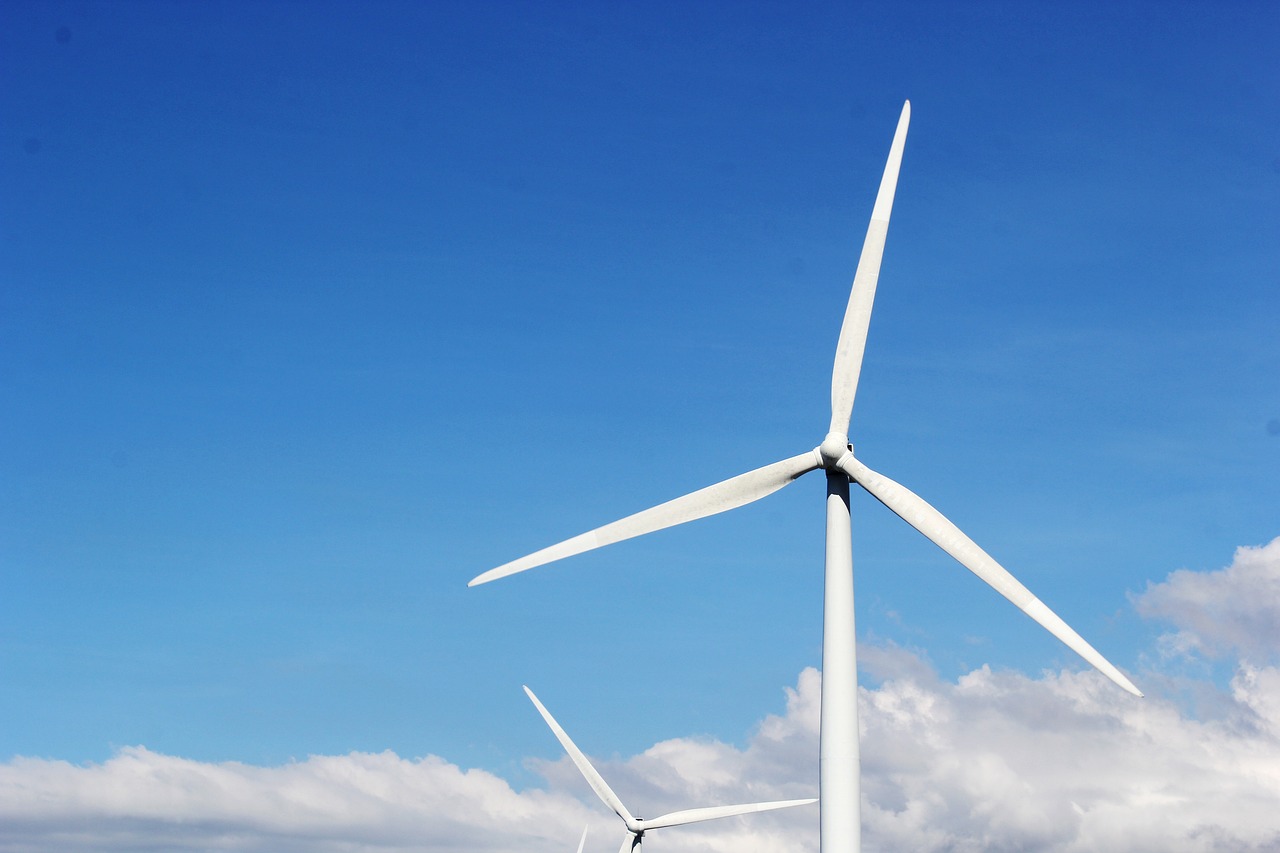
Water-Efficient Irrigation
Implementing systems is a game-changer for homeowners looking to reduce their water consumption while maintaining a lush, vibrant garden. Traditional irrigation methods often lead to excessive water waste, leaving homeowners frustrated and their plants thirsty. However, by switching to more efficient systems, you not only save water but also contribute to a more sustainable environment. One of the most effective methods is drip irrigation, which delivers water directly to the plant roots, ensuring that every drop counts.
Drip irrigation systems consist of a network of tubing and emitters that release water slowly and directly to the soil. This targeted approach minimizes evaporation and runoff, making it an ideal choice for gardens, flower beds, and even vegetable patches. In addition to drip systems, other options include soaker hoses and smart irrigation controllers that adjust watering schedules based on weather conditions. These technologies not only enhance plant health but also help in managing water resources effectively.
To illustrate the benefits of water-efficient irrigation, consider the following table that compares traditional irrigation methods with modern water-efficient systems:
| Feature | Traditional Irrigation | Water-Efficient Irrigation |
|---|---|---|
| Water Usage | High | Low |
| Evaporation Loss | Significant | Minimal |
| Plant Health | Variable | Consistent |
| Installation Cost | Low | Moderate |
| Maintenance | High | Low |
As you can see, the advantages of switching to water-efficient irrigation systems are clear. Not only do they save water and reduce costs, but they also promote healthier plants. If you're considering an upgrade, think about your garden's specific needs. For instance, if you have a vegetable garden, a drip irrigation system can ensure that your crops receive consistent moisture without overwatering. On the other hand, if you're dealing with flower beds, soaker hoses might be the perfect solution, allowing for a gentle, even distribution of water.
In conclusion, investing in water-efficient irrigation is not just about saving water; it's about creating a sustainable future for your garden and the environment. By adopting these innovative technologies, you can cultivate a thriving outdoor space that conserves resources and enhances your home's value. So, why not take the plunge? Your garden—and the planet—will thank you!
- What is the most efficient irrigation system for home gardens? Drip irrigation is often considered the most efficient, as it delivers water directly to the roots, minimizing waste.
- How much water can I save by switching to a water-efficient system? Homeowners can save up to 50% more water compared to traditional methods, depending on the system and plants used.
- Are water-efficient systems expensive to install? While the initial cost may be higher, the long-term savings on water bills and maintenance often offset the investment.
Frequently Asked Questions
- What are the benefits of upgrading to energy-efficient windows?
Upgrading to energy-efficient windows can significantly reduce your heating and cooling costs. They minimize heat loss in winter and keep your home cooler in summer, enhancing indoor comfort. Plus, they can increase your home's value!
- How do solar panels increase my home's value?
Solar panels not only reduce your electricity bills but also make your home more attractive to buyers. Many homebuyers are looking for energy-efficient features, and having solar panels can set your property apart in the market.
- What types of solar panels should I consider?
There are mainly two types of solar panels: monocrystalline and polycrystalline. Monocrystalline panels are more efficient and take up less space, while polycrystalline panels are generally more affordable and work well for larger installations.
- Are smart home technologies worth the investment?
Absolutely! Smart home technologies, like smart thermostats and energy monitoring systems, can optimize your energy use, leading to significant savings on utility bills while also providing you with added convenience.
- How does rainwater harvesting work?
Rainwater harvesting involves collecting rainwater from your roof and storing it in tanks for later use. This eco-friendly practice can help conserve water and reduce your utility costs, especially for irrigation and other non-potable uses.
- What are the key components of a rainwater harvesting system?
The main components include collection surfaces (like roofs), storage tanks, and filtration systems. Each part is vital for ensuring that the collected rainwater is clean and usable for your needs.
- Why is insulation important for my home?
Good insulation keeps your home comfortable year-round by preventing heat loss in winter and heat gain in summer. It can lead to substantial savings on your energy bills and also improves indoor air quality.
- What types of insulation materials are available?
There are several types of insulation, including fiberglass, foam board, and spray foam. Each type has its own properties and benefits, so it's important to choose the right one based on your specific needs and climate.
- How can I create an eco-friendly landscape?
Start by selecting native plants that require less water and maintenance. Implementing water-efficient irrigation systems, like drip irrigation, can also help reduce water usage while promoting healthy plant growth.
- What are the advantages of using native plants in landscaping?
Native plants are adapted to your local climate and soil conditions, making them easier to care for. They also support local wildlife and ecosystems, contributing to biodiversity while requiring less water and resources.



















